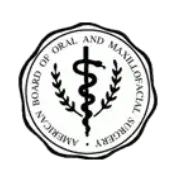Want a Bright and Healthy Smile? Follow These Top Tips
A bright and healthy smile starts at home. Seeing your dentist every six months for a routine cleaning and checkup is a big step in the right direction when it comes to your oral hygiene, but the path to your best smile begins with a consistent, everyday dental care routine. Here are some tips to help you achieve your most beautiful smile.
-
Choose Good-for-Your-Smile Foods
It's no secret that what you eat impacts your physical health, and your smile is no exception. A balanced diet will ensure you get all the vitamins and minerals you need to grow and maintain healthy teeth, but what you eat impacts your smile in other ways too.
For instance, crunchy fruits and veggies cause you to produce more saliva, which naturally washes your mouth in between brushing and flossing. Meanwhile, foods that are high in sugar should only be enjoyed on occasion because sugar can feed the bad bacteria in your mouth and contribute to tooth decay.
While we're on the topic, it's well known that red wine, coffee, and soda will stain your teeth. In fact, any highly-acidic food or drink is bad for your smile as it can wear down enamel and discolor it over time. Instead, drink lots of water to gently rinse your mouth throughout the day and promote saliva production.
-
Kick-Start Your Oral Hygiene With the Right Toothpaste and Brush
There are countless toothpaste types on the market, but did you know that whitening toothpaste actually contains abrasives that can wear down enamel over time? Enamel is the protective outer layer on your teeth - and when it gets thin, the naturally yellow center of your tooth is able to show through.
If you want the healthiest smile possible, choose a toothpaste with fluoride, which will help strengthen enamel over time. Fluoride can also help reverse early-stage tooth decay, which means fewer fillings. To max out your oral hygiene, pair that toothpaste with a soft bristle toothbrush to avoid unnecessary abrasion, and make sure you brush at least twice a day.
-
Keep Your Tongue Clean
You may have heard that your tongue is the primary source of bad breath-causing bacteria, and that's not a myth. A host of bacteria live on your tongue, both good and bad, and it's important that you scrub your tongue every time you brush. Forgetting to clean your tongue is like wiping clean dishes with a dirty towel!
Choose a toothbrush with a tongue scrubber on the reverse side, or pick up a tongue scraper that's designed to make quick work of cleaning your tongue. You don't necessarily need to use toothpaste on your tongue - you just need some gentle abrasion to clean off the bacteria. Once you're done, continue your oral hygiene routine with a fluoride mouthwash to rinse your tongue and pearly whites.
-
Never Skip Flossing Again
After you brush, always use floss. Flossing helps remove excess plaque and clean in between your teeth where your brush can't reach. If that plaque isn't removed, it will build up over time and put you at an increased risk of gum disease and other problems.
The type of floss you use doesn't matter, as long as you're using it correctly. String floss is affordable and easy to take with you anywhere, but disposable pre-strung floss comes on a little handle for easy use. Avoid nicking your gums with the floss, and use a couple of new pieces as you move around your mouth.
If you floss every day, you'll notice the color of your gums improving and any tenderness you've been experiencing may start to disappear. However, when you first start flossing, you might experience some discomfort and bleeding. Your dentist can show you how to floss properly and assess your gum health to let you know whether any discomfort or bleeding might be an early warning sign of issues like gum disease.
-
Ask an Oral Surgeon About Gum Disease
Periodontitis, often called gum disease, is an infection in the gums that will degrade your jawbone over time and lead to tooth loss. Fortunately, gum disease is preventable with proper oral hygiene, which is good news since it's a risk factor for heart and lung diseases and puts a serious damper on your healthy smile.
Bleeding when you floss could be an early sign of gum disease, and it's one of the most obvious. Oftentimes, other symptoms go unnoticed — things like puffy, discolored, or tender gums and bad breath. Gum disease is incredibly common, especially if you don't brushandfloss regularly. That's why you should talk to your oral surgeon about the health of your gums and discuss what they can do if you have any stage of gum disease.
Keep an eye out for our upcoming blog for more information on why gum disease is so dangerous and how your oral surgeon can help you prevent and recover from gum disease and the decay or tooth loss that can result from it. In the meantime, contact Oral Surgery DC for more information on getting and maintaining a healthy smile.






4.9 Stars
based on 134 reviews
5 Stars
based on 11 reviews
5 Stars
based on 11 ratings